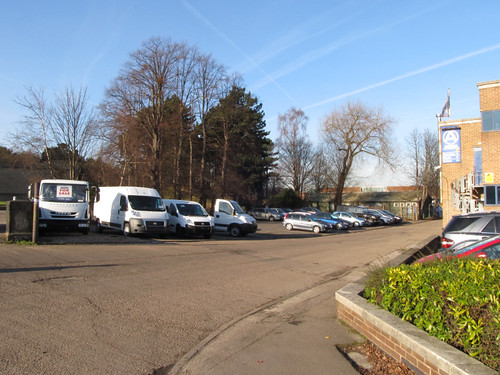ITO have recently released various enhancements to their OSM Analysis1 tool, and the race is on to get local authority areas above 95% completion.
Not a hope in Nottingham, were we're just shy of the 85% mark. Firstly, many of the missing roads are in un-surveyed areas, and, if possible, I don't want future surveys compromised by 'armchair mapping'. Secondly, the OS data often misses many addresses in modern areas of social housing, usually because they have a name, but no associated residential street. I've noted a few lately along Arnold Road, and also on Haydn Road. So even if we ostensibly are 'road-name complete' many addresses in the city would not be located on OSM.
However, I am very content to add names to areas which have been armchair mapped in the past. Doing so adds value to the existing data, without seriously compromising the need to survey. I do not add additional features missing from such data, unless I have seen them myself. Nor do I correct apparent spelling errors, except when I can check against the original source: these may reflect a real difference between what is on the ground and the OS data. Similarly I do not change geometries.
Using OSM Analysis, and using the not:name=* tagging convention has enabled some 150 roads to be cleared, with around 500 to do. BUT, there's one really close to my local survey patch, which I can't resolve: Kenyon Road (picture above). I know the small stretch of concrete well : as you can see from the photo it mainly provides hard-standing for lorries. Although it will show up as Kenyon Road in all sorts of maps &mdash OS MasterMap, GoogleMaps , BingMaps &mdash there is no evidence on the ground. I presume the road started out providing access to premises sited on an awkward bit of land sandwiched between the Nottingham Canal and the River Leen. Around 1975 the local Scout troop sold a small portion of land to the truck dealer to widen the road, so I don't believe it's a public road. The company's address is 522, Derby Road, so its not used for addresses. Furthermore, the name does not appear on out-of-copyright 25 inch to the mile maps from 1937-1940.
So ever since OS Locator came out I've had a dilemma: is this just a small error creeping in everywhere from erroneous OS data; is it a 'book' name, that is one never used except on official maps; or is it an obscure name known to a small number of locals. There is a glimmer of information in the latest issue of the Lenton Times, where the road is mentioned in an excerpt from the 1957 Kelly's directory. I plan to follow this up and ask the experts at the Lenton Local History Society. In the meantime it remains un-named.
View Larger Map
I mentioned this at WhereCampUK, and someone pointed out that this type of in-depth investigation of a single streetname is something that neither the Ordnance Survey nor commercial providers are every likely to do. It's one reason why OSM has the potential, as Chris Hill put it on IRC the other day,
"not to be the best free map, but the best map".
1. Registration required.

Thank you for the quote - it is exactly what I believe can be done with OSM, using the very best sources but verifying details ruthlessly on the ground, and sometimes with further research to just be sure.
ReplyDeleteKenyon Road appears on the 1:2500 OS map dated 1955 at old-maps.co.uk, where there appears to be a row of properties numbered 1 to 5. The one before that is 1916 and doesn't have it. Make of that what you will!
ReplyDelete--
Steve Doerr
Steve, I've known this road since 1963: I've never heard anyone local refer to it as Kenyon Road. Even if it was called Kenyon Road, is it valid to put a name on a road which is privately owned and no-one local would know what you are talking about.
ReplyDeleteAFAIK, there was a garage called Kenyon's Garage, and the road was loosely called that locally for a brief time. The actual alignment would have changed at various times: Derby Road was straightened in the 1920's when the Rose and Crown was built, and the whole area changed in 1966 when the Leen was culverted and diverted into the bed of the Nottingham Canal. In those days there was a Co-op, a newsagent and a hardware store between Lenton Lodge and the Rose & Crown. The Rose and Crown car park was a bowling green, and the building on the corner of Triumph Road was the local offices of the AA. No-one would add these to OSM, and yet there's a lot better evidence for them than 1 OS map and 1 secondary quotation of a Kelly's directory. My guess is that the OS used secondary sources for a poorly substantiated name.
As I said : when I get chapter & verse from the Local History Society - many of whom remember using the former lock at the site as a swimming pool, then I'll be happy that in the 1950s it was called Kenyon Road. But I will still need evidence that it's called that now!